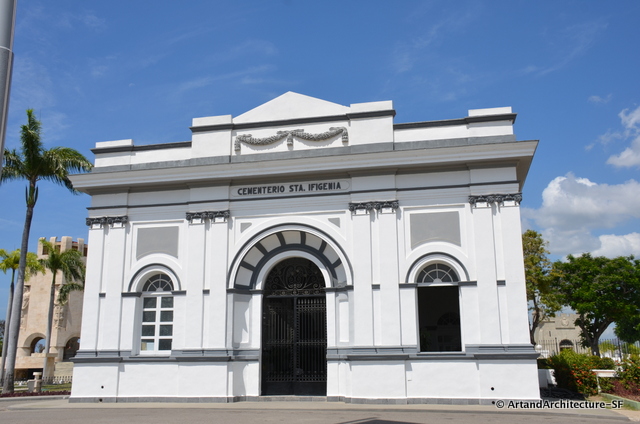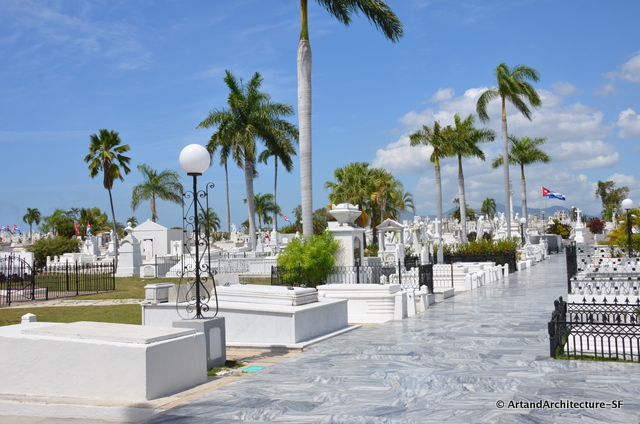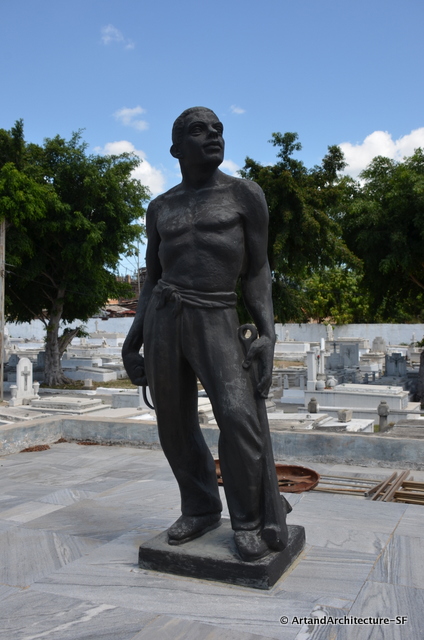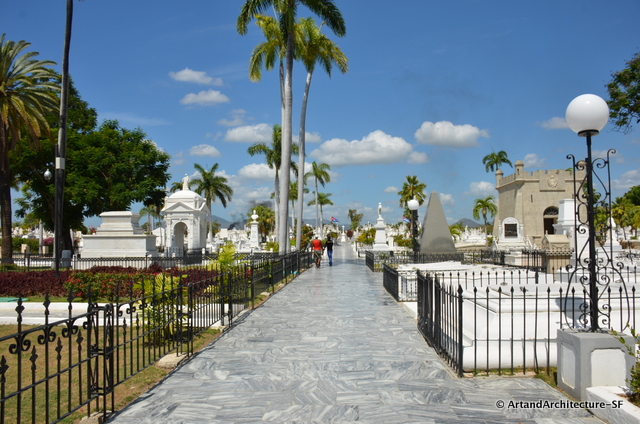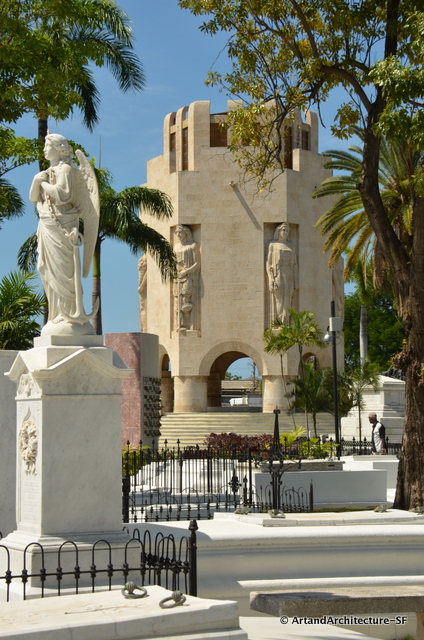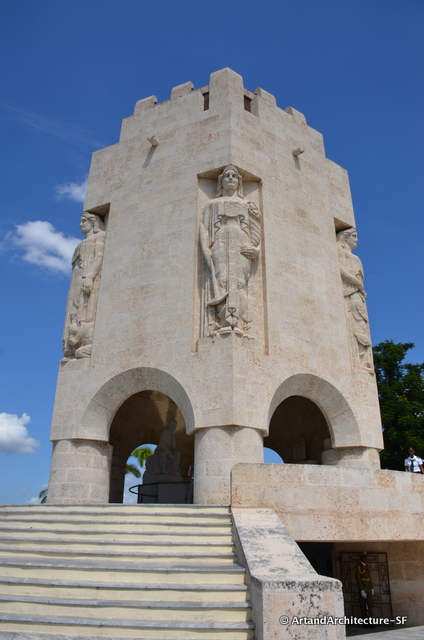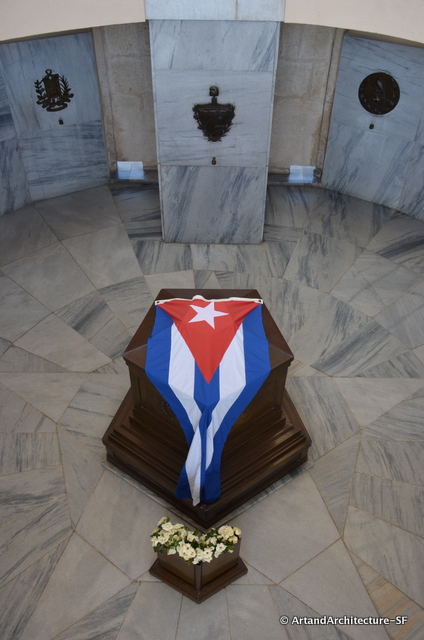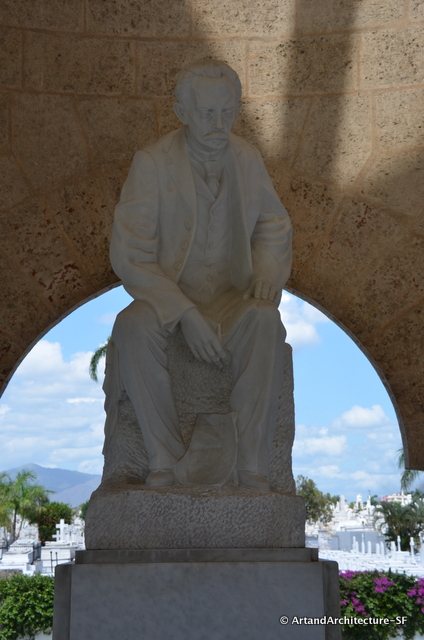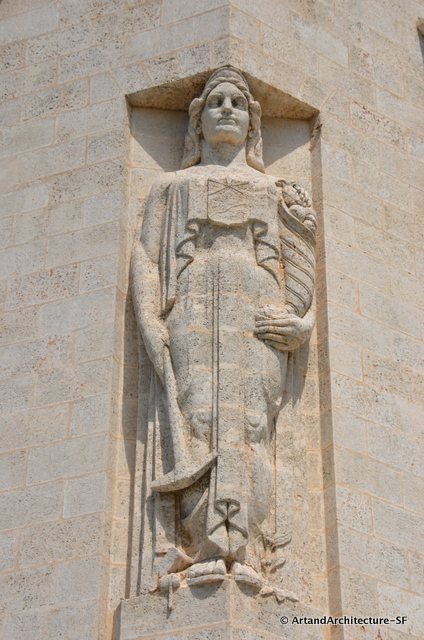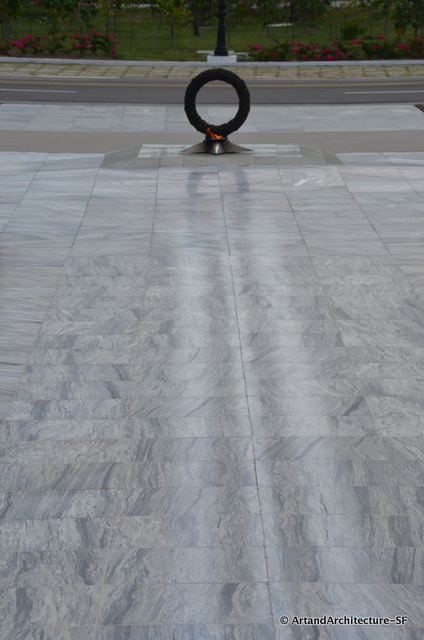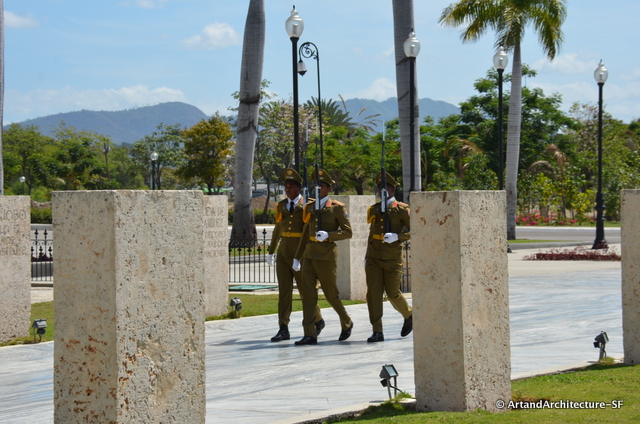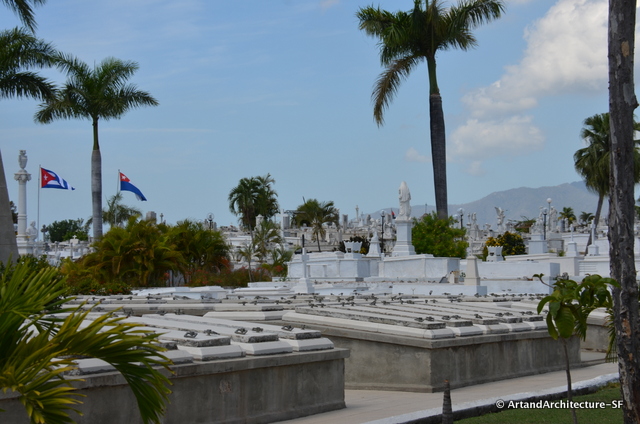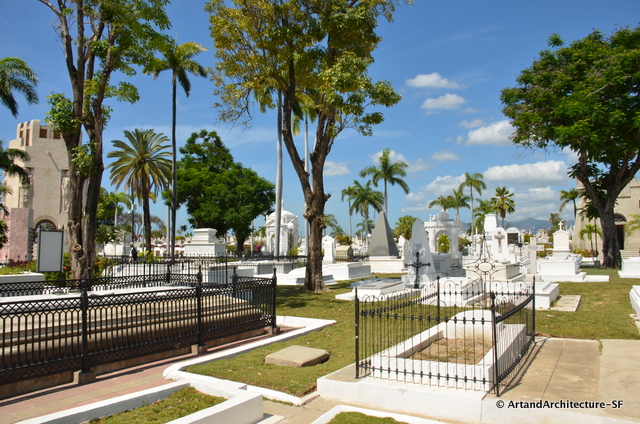Created in 1868 to accommodate the victims of the War of Independence and a simultaneous yellow-fever outbreak, the Santa Ifigenia includes many great historical figures among its 8000-plus tombs, notably the mausoleum of José Martí.
When the cemetery was inaugurated in February 1868, it was in the form of a Roman cross, divided into courtyards. The main ones were used to bury those high up on the social ladder, and they move outward until arriving at the areas where those perishing from yellow fever and cholera epidemics were laid to rest.
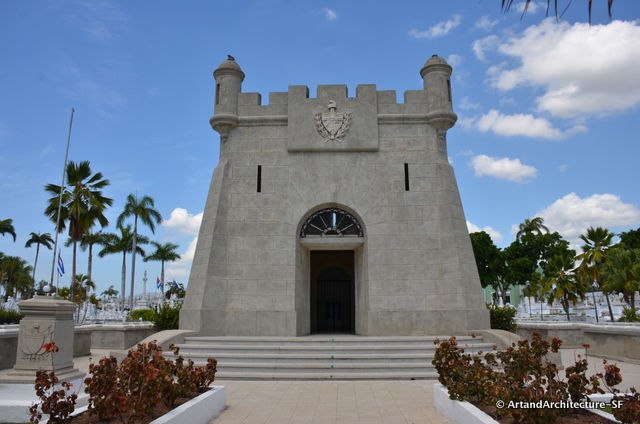
The Altarpiece of the Heroes, the resting place of Generals Jose Maceo, Guillermon Moncada and Flor Crombet, who headed a legion of officers and soldiers in the two 19th-century independence wars in Cuba.
The highlight of the cemetery, for many, is the tomb of Cuba’s national hero, José Martí (1853–95). Erected in 1951 during the Batista era, the hexagonal structure is positioned so that Martí’s wooden casket receives daily shafts of sunlight. This is in response to a comment Martí made in one of his poems that he would like to die not as a traitor in darkness, but with his visage facing the sun.
*
José Julián Martí Pérez (1853 – 1895) is a Cuban national hero and an important figure in Latin American literature. He was a poet, an essayist, a journalist, a revolutionary philosopher, a translator, a professor, a publisher, and a political theorist.
Born in Havana, Martí would travel extensively in Spain, Latin America, and the United States, raising awareness and support for the cause of Cuban independence. His unification of the Cuban émigré community, particularly in Florida, was crucial to the success of the Cuban War of Independence against Spain. He was a key figure in the planning and execution of this war, as well as the designer of the Cuban Revolutionary Party and its ideology. He died during the Battle of Dos Ríos on May 19, 1895.
Martí is considered one of the great turn-of-the-century Latin American intellectuals. His written works consist of a series of poems, essays, letters, lectures, a novel, and even a children’s magazine. He wrote for numerous Latin American and American newspapers; he also founded a number of newspapers himself. His newspaper Patria was a key instrument in his campaign for Cuban independence. After his death, one of his poems from the book, “Versos Sencillos” (Simple Verses) was adapted to the song “Guantanamera”, which has become the definitive patriotic song of Cuba.
*
This is a very short video I shot, make sure your volume is on, the music is half the entertainment.
